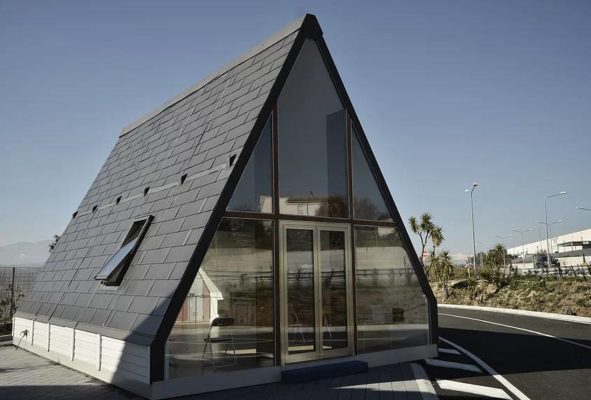
The earthquake resistance of small buildings may be increased by taking some precautions and measures in site selections, building planning and constructions as explained below:
1. Site Selection: The building constructions should be avoided on
(a) Near unstable embankments
(b) On sloping ground with columns of different heights
(c) Flood affected areas
(d) On subsoil with marked discontinuity like rock in some portion and soil in some portion.
2. Building Planning: Symmetric plans are safer compared to unsymmetric. Hence go for square or rectangular plans rather than L, E, H, T shaped. Rectangular plans should not have length more than twice the width.
3. Foundations: Width of foundation should not be less than 750 mm for single storey building and not less than 900 mm for storeyed buildings. Depth of foundation should not be less than 1.0 m for soft soil and 0.45 m for rocky ground. Before foundation is laid remove all loose materials including water from the trench and compact the bottom. After foundation is laid back-fill the foundation properly and compact.
4. Masonry: In case of stone masonry:
• Place each stone flat on its broadest face.
• Place length of stones into the thickness of wall to ensure interlocking inside and outside faces of the wall.
• Fill the voids using small chips of the stones with minimum possible mortar.
• Break the stone to make it angular so that it has no rounded face.
• At every 600 to 750 mm distance use through stones.
In case of brick masonry:
• Use properly burnt bricks only.
• Place bricks with its groove mark facing up to ensure better bond with next course.
In case of concrete blocks:
• Place rough faces towards top and bottom to get good bond.
• Blocks should be strong.
• Brush the top and bottom faces before laying.
In general walls of more than 450 mm should be avoided. Length of wall should be
Restricted to 6 m. Cross walls make the masonry stronger. It is better to build partition
Walls along main walls interlinking the two.
5. Doors and Window Openings:
• Walls with too many doors and windows close to each other collapse early.
• Windows should be kept at same level.
• The total width of all openings in wall should not exceed ⅓ rd the length of wall.
• Doors should not be placed at the end of the wall. They should be at least at 500 mm from the cross wall.
• Clear width between two openings should not be less than 600 mm.
6. Roof:
• In sloping roofs with span greater than 6 m use trusses instead of rafters.
• Building with 4 sided sloping roof is stronger than the one with two sided sloping, since gable walls collapse early.
7. Chejjas:
• Restrict chejja or balcony projections to 0.9 m. For larger projections use beams and
Columns.
8. Parapet: Masonry parapet wall can collapse easily. It is better to build parapet with bricks up to 300 mm followed by iron railings.
9. Concrete and Mortar: Use river sand for making mortar and concrete. It should be sieved to remove pebbles. Silt should be removed by holding it against wind. Coarse aggregates of size more than 30 mm should not be used. Aggregates should be well graded and angular. Before adding water cement and aggregates should be dry mixed thoroughly.
10. Bands: The following R.C. bands should be provided
(a) Plinth band
(b) Lintel band
(c) Roof band
(d) Gable band.
For making R.C. bands minimum thickness is 75 mm and at least two bars of 8 mm diameters are required. They should be tied with steel limbs of 6 mm diameter at 150 mm spacing. If wall size is large, diagonal and vertical bands also may be provided.
11. Retrofitting: Retrofitting means preparing a structure in a scientific manner so that all elements of a building act as an integral unit. It is generally the most economical and fastest way to achieve safety of the building. The following
are some of the methods in retrofitting:
• Anchor roof truss to walls with brackets.
• Provide bracings at the level of purlins and bottom chord members of trusses.
• Strengthen gable wall by inserting sloping belt on gable wall.
• Strengthen corners with seismic belts.
• Anchor floor joists to walls with brackets.
• Improve storey connections by providing vertical reinforcement.
• Induce tensile strength against vertical bending of walls by providing vertical reinforcement at all inside and outside corners.
• Encase wall openings with reinforcements.


